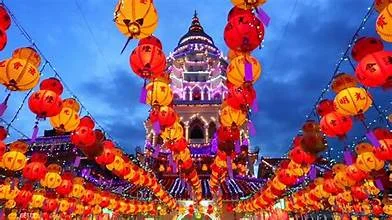As the Lunar New Year approaches, billions of people across Asia and beyond are gearing up for one of the most anticipated and celebrated festivals of the year. This vibrant and culturally rich occasion, also known as Chinese New Year or Spring Festival, is steeped in tradition, folklore, and symbolism. From the mesmerizing dragon dances to the sumptuous feasts, Lunar New Year traditions are as diverse as they are captivating. In this blog post, we’ll take a closer look at some of the most enchanting aspects of Lunar New Year celebrations, including mythical beasts and lucky dishes, to unravel the tapestry of this beloved holiday.
Mythical Beasts: Guardians of Prosperity
One of the most iconic symbols of Lunar New Year festivities is the dragon, a mythical creature revered for its auspicious qualities. In Chinese culture, the dragon represents power, strength, and good luck, and its presence during Lunar New Year parades and celebrations is believed to ward off evil spirits and bring blessings for the year ahead. Elaborate dragon dances, accompanied by the rhythmic beating of drums and cymbals, fill the streets with energy and excitement, captivating audiences young and old.
Another mythical beast that plays a prominent role in Lunar New Year traditions is the lion. Often depicted in vibrant and colorful lion dance performances, the lion symbolizes courage, protection, and prosperity. It is customary for lion dance troupes to visit homes and businesses, performing intricate routines to the delight of onlookers and receiving offerings of “hong bao” (red envelopes) containing money or auspicious symbols in return.
Lucky Dishes: Symbolism on the Table
Food lies at the heart of Lunar New Year celebrations, with families coming together to share in sumptuous feasts featuring an array of auspicious dishes.
One of the most popular Lunar New Year dishes is “nian gao,” or sticky rice cake. Its name is a homonym for “year high” or “yearly progress,” symbolizing growth, advancement, and prosperity.
Another favorite Lunar New Year delicacy is “yu sheng,” a colorful salad known for its symbolic significance and interactive preparation. Also known as “lo hei” in Cantonese, yu sheng features a variety of ingredients such as raw fish, shredded vegetables, pomelo, peanuts, and crispy crackers, each representing prosperity, abundance, and good fortune.
Embracing Tradition, Cultivating Community
At its core, Lunar New Year is a time for family reunions, cultural pride, and renewal. It’s a time to honor the past, celebrate the present, and embrace the future with hope and optimism. As communities come together to share in the festivities, whether through dragon dances, temple visits, or festive feasts, the spirit of unity and camaraderie shines brightly.
In a world that is constantly evolving, Lunar New Year traditions serve as a timeless reminder of the importance of heritage, community, and connection.areAs we usher in the Year of the Tiger, let us embrace the mythical beasts and lucky dishes that enrich our celebrations, and let us cherish the bonds that unite us as we embark on a new lunar cycle filled with promise, prosperity, and joy. Happy Lunar New Year!






Comments are closed